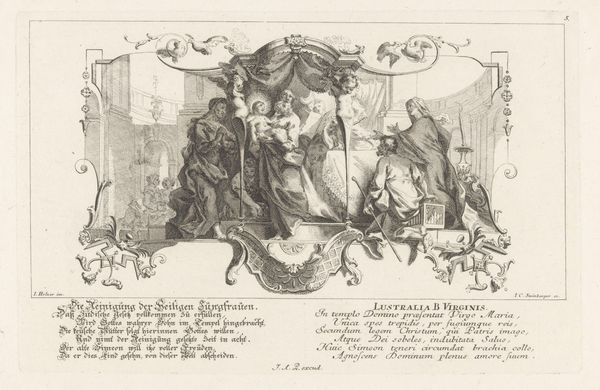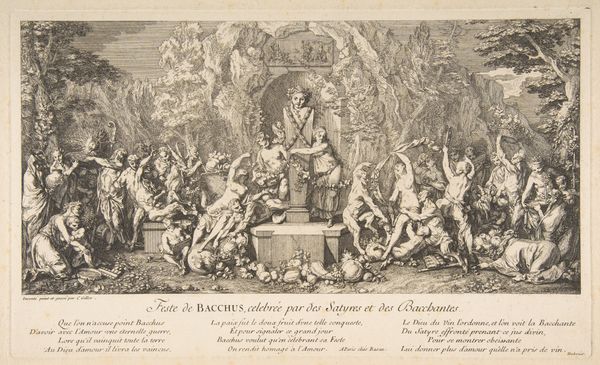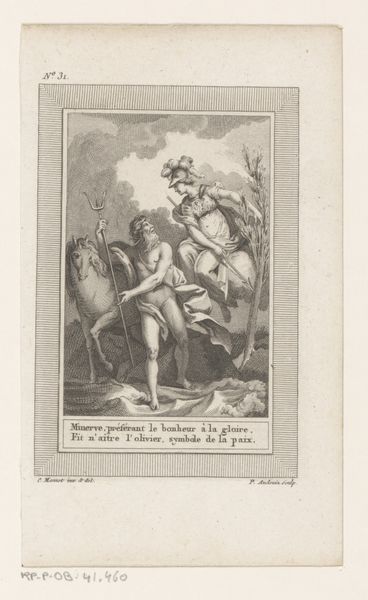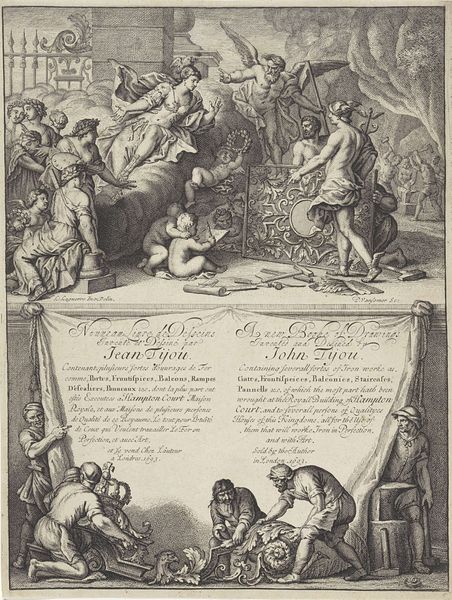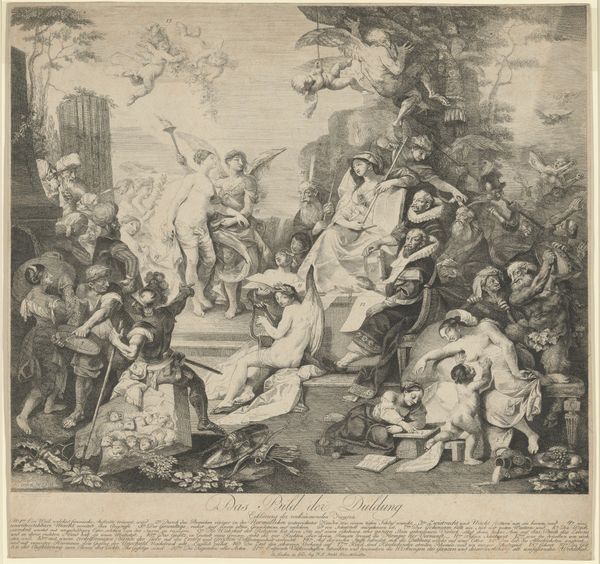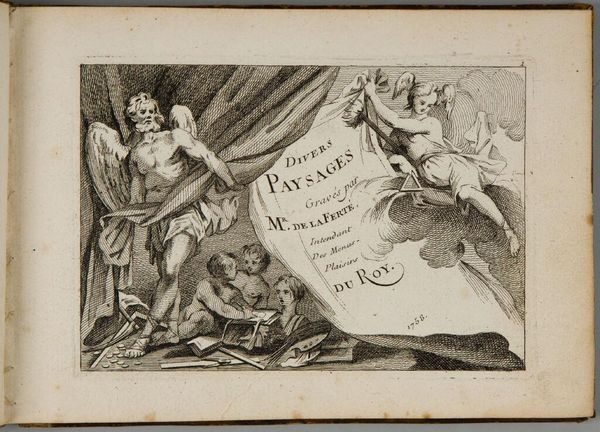
print, engraving
#
baroque
# print
#
history-painting
#
engraving
Dimensions: height 191 mm, width 297 mm
Copyright: Rijks Museum: Open Domain
Curator: This engraving, crafted sometime between 1719 and 1727, is Johann Christoph Steinberger's rendition of the "Adoration of the Magi," currently housed at the Rijksmuseum. The style very clearly demonstrates Baroque influences. What are your initial impressions? Editor: Baroque! It feels less grandiose than I’d expect, almost delicate. The lines are so fine, creating this swirling energy around the central scene. But, wow, there’s a lot going on here. Like, cherubs with telescopes... are they actually spying on the holy family? Curator: Perhaps 'observing' is a better term than 'spying.' Telescopes at this time symbolized a new scientific worldview coinciding with religious beliefs, not necessarily conflicting but enriching each other. Consider, too, that Epiphany signifies revelation and illumination—knowledge emerging from the divine, even as filtered through human invention. Editor: Mmm, okay. I’m still caught on the angel carrying the star. It’s positioned like…a spotlight? A heavenly PR agent? It gives the image an almost theatrical feel, right? Stagecraft, divine narrative, the whole shebang! Curator: Absolutely! The star itself represents fulfillment of prophecy—the convergence of astrological signs and divine promise, a common Baroque trope in historical paintings and engravings. Notice the ornate frame intertwined within the central image. How does this add to the central meaning? Editor: That intertwining feels key! It binds the terrestrial, represented by those grounded wise men, with the celestial spectacle happening above. It suggests that no matter our earthly struggles and limitations, we're always part of this larger cosmic play, witnessed and maybe even gently nudged along by the heavens. It’s almost comforting, in a busy, baroque sort of way. Curator: It does weave together multiple dimensions. Ultimately, Steinberger uses visual symbolism to reinforce this very baroque concept that faith is revealed and discovered simultaneously across time and space, as history and knowledge continually evolves. Editor: Nicely said. Well, I initially saw the engraving as crowded and slightly bizarre. Now I see it as… deliberately intricate and strangely hopeful. Curator: Indeed, a new understanding gained by thoughtful looking and reflection.
Comments
No comments
Be the first to comment and join the conversation on the ultimate creative platform.

